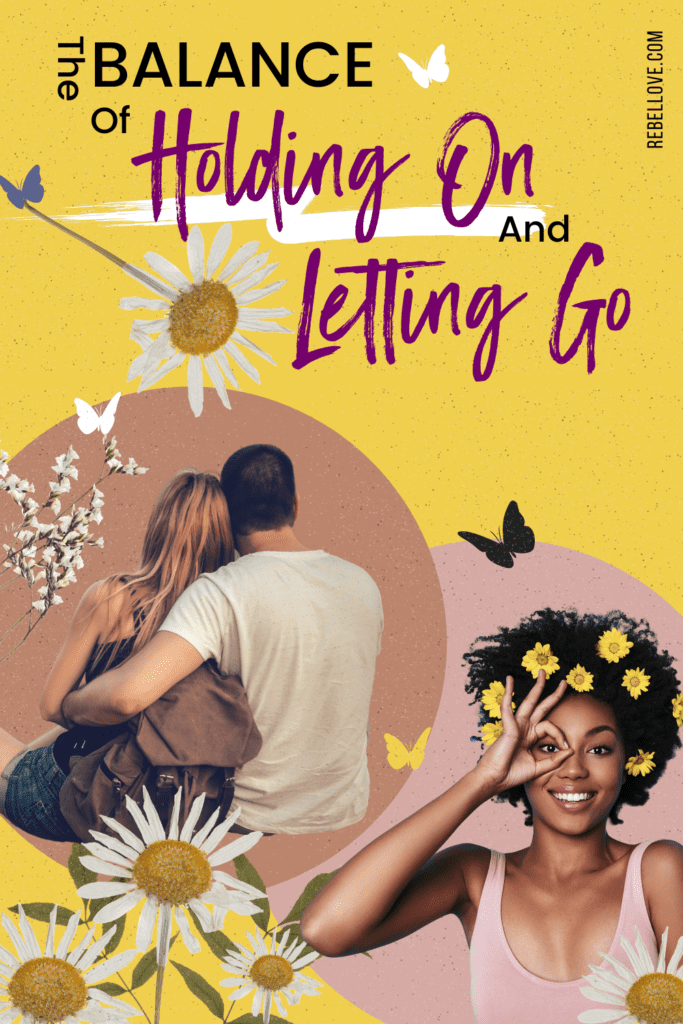This post may contain affiliate links and Rebel Love may be compensated for purchases visitors make through these links. We only promote products and services we really care about and that we think are useful. Read the full policy here.
In deciding what mantras and mechanisms guide us through life, there’s often a tendency to marry ourselves to one side of an equation. I’ve noticed, for example, that in the world of Self-help/Self-improvement writing, we lean heavily on the principle of ‘Letting Go,’ and make ‘Holding On’ into an explicitly negative thing. Maybe there is no drama here; maybe people are aware (consciously or not) that, ideally, we are ambidextrous: we hold when something needs to be held, and release when release is necessary. At other times, we do something incredible, ‘holding on’ and ‘letting go’ simultaneously. The verb for this feat is “cradling.”

What you might hear, in these gestures, is the image of a hand. I want to follow that image and see what can be established, by assuming, as I will now, that each person bears an internal hand, which is expressed in every moment of our lives. (Traces of this conceptual hand occasionally show in our words – ‘comprehend,’ ‘manipulate,’ ‘grasp,’ ‘behold’). When I picture its functions, and the part we play, I configure it like this. Our task, through the sequence of life’s moments, is to keep the hand open (wide-palmed, with outstretched fingers). Enactments of beauty, courage, creativity, intelligence – (and these weighty terms are only definable by you, both intuitively, and through active learning) – inspire the hand, or exercise the muscle of the hand, to open. Like all aspects of self, idleness weakens and atrophies the hand, while engagement strengthens it.
This is where it gets a little bit technical. The worth of the open hand is that it contains the power and potential of both ‘holding on’ and ‘letting go’ within itself. Its dark brother, the hand closed to a fist, (a hardness wrought by softness), can only do what it is doing – it has no choice – whereas the open hand can pose a fist if and when it needs to. And you need that taut knuckle often; setting limitations, practising discipline, & making decisions are all instances where firmness (the very antithesis of ‘letting go’) is vital. The value, then, of the two gestures, ‘holding on’/‘letting go,’ does not reside implicitly within them (i.e. they are not ‘good’ or ‘bad’ by themselves). Both can be an expression of an open hand, or a closed one, depending on how they are deployed by you as an individual. Letting go, when something must be fought for, is as worrisome as clutching when something needs leaving.

Finally, how to determine if ‘holding on’ is right, or if we’re better to let go, is something only your internal Ear – (maybe this is the ‘ear’ in your ‘heart’) – can tell you. I don’t mean to say, conclusively, ‘trust your gut,’ because that, like entrenching ourselves in the singular tenet of ‘letting go,’ would be to freeze ourselves spiritually, when what we want to do is remain warm and mobile, able to fly or fight depending what’s called for.
Very often, the occasion requires a Hermes-like fleetness, dancing between the two functions: assertion and receptivity, caress and clutch.
I believe that investing in these special, imagined organs is our spiritual task. And I think that the stronger they become, the less you rely on secondary sources and systems to define those lofty concepts mentioned above … beauty, courage, creativity …